Estimated reading time: 21 minutes
Over the years we’ve heard lots of stories and memories that people have about fruit. Apricot trees seem to have a special place in people’s hearts.
An apricot tree has been common in backyards since waaaaay back when.
What are the best tasting apricot varieties?
The answer to this can be very personal. We’ve spoken to thousands of people about apricots and many of them have special memories of the smell and taste of eating sweet, ripe apricots on a hot summer’s day.
Maybe they were visiting Grandma or pinching fruit from over the fence at the neighbour’s place.
People similarly tend to have strong opinions on which apricots make the best jam, based on beloved memories.
We definitely share the apricot love, so today we’re delving into what makes them such a fondly remembered backyard tree, and asking whether they deserve a place in your garden.
Where do apricot trees come from?
Though their proper name is Prunus armeniaca, apricots probably come from China rather than Armenia. The earliest known writings about apricots are from the time of the emperor Yu, around 2200 BC, and some sources say they were known in India in 3000 BC. It gives a whole new twist to the notion of “heritage” fruit, doesn’t it?
There are dozens of different varieties of apricots. We grow 11 at our place, chosen because they ripen consecutively, which gives us ripe apricots from late spring right through until mid-summer. It also gives us a lot of variety of flavours and uses.
We’re adding more to our collection all the time, so we’ll update you when we know what they’re like.
The difference between apricot varieties
There are many ways we could list all the apricots we grow, from their size to their different uses.
The reason we chose to include each of these varieties in our garden was to create a continuous sequence of ripening, from the earliest to the latest. It’s one of the principles we recommend to create true food security in your garden.
So our varieties, in order of ripening, are:
Poppicot
A lively flavoured sweet apricot with tart skin, which has a strong apricot flavour when properly tree-ripened.
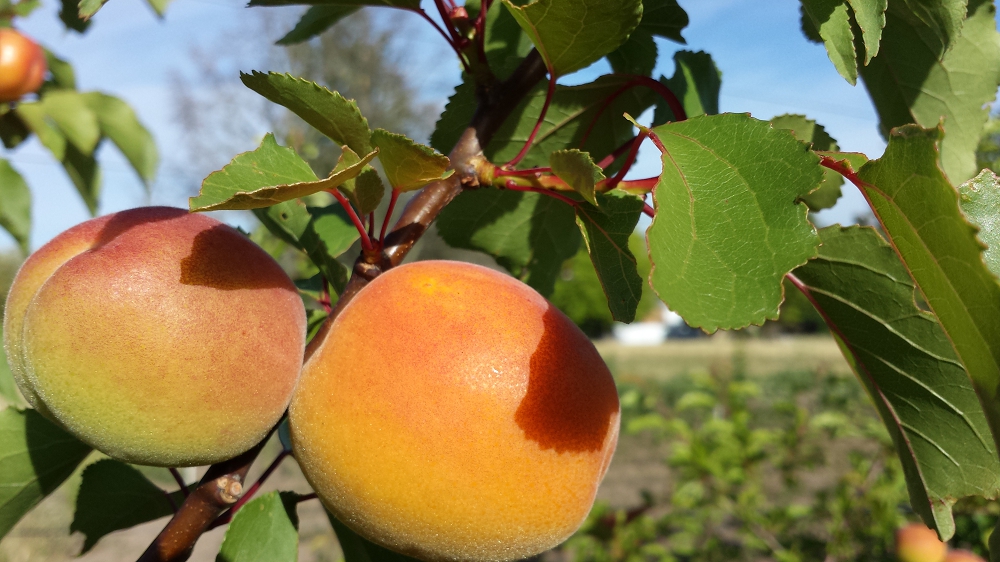
Earlicot
A large apricot, prone to cracking and deformities on some trees in some seasons, ripens well on the tree and has a good flavour. Pollinised by any other apricot that flowers at the same time, e.g. Katy and maybe Castlebrite (depending on your climate).
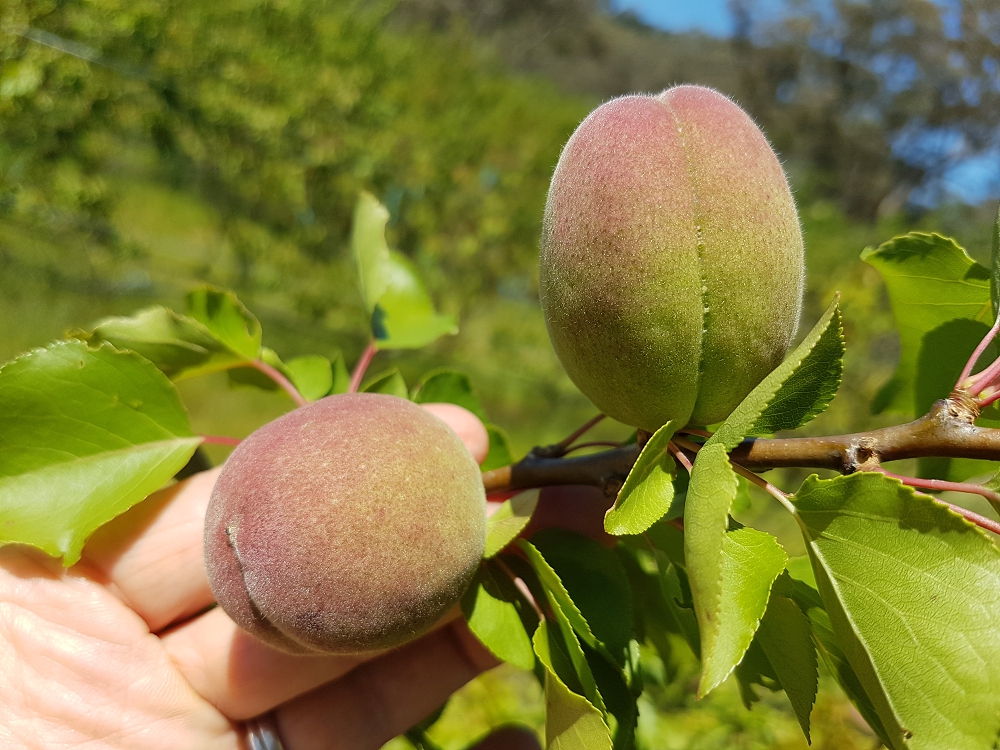
Katy
A large, egg-shaped apricot, can crack easily in the rain, but has wonderful intense flavour when ripe, a really special apricot. Self-fertile.
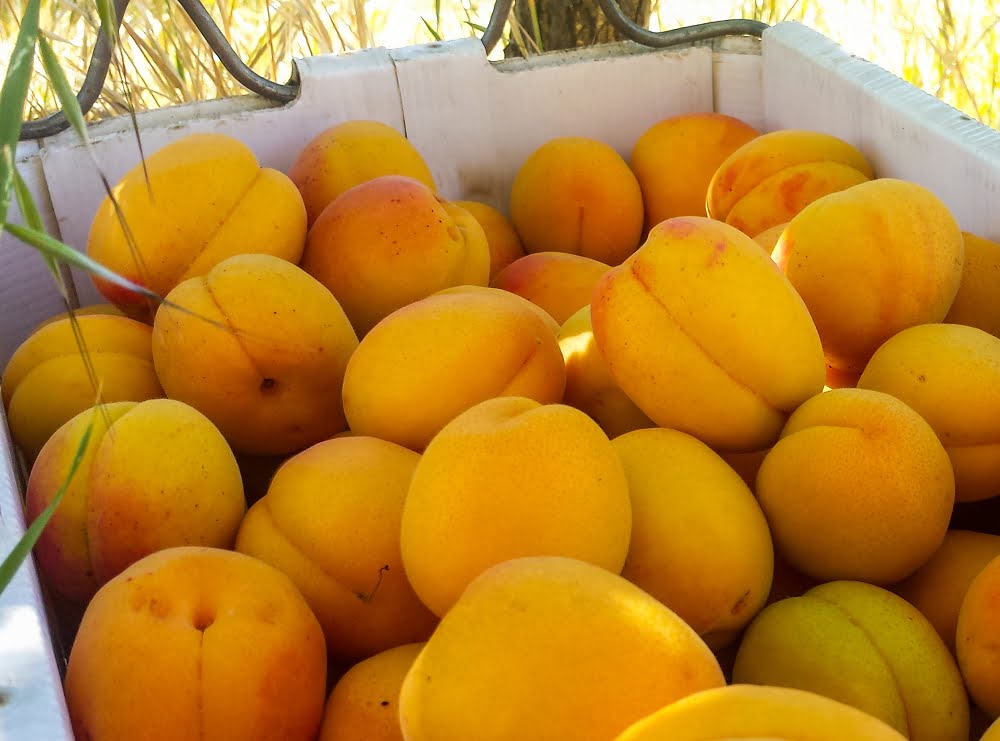
Blenheim
A rare heritage variety from England in the early 1800s. Fruit is small to medium, with a prominent seam and a very “apricot-y” flavour. Bright orange flesh that is juicy and sweet when ripe, freestone. Previously one of the most commonly grown apricots. Self-fertile. Flowers early, making it vulnerable to frost.
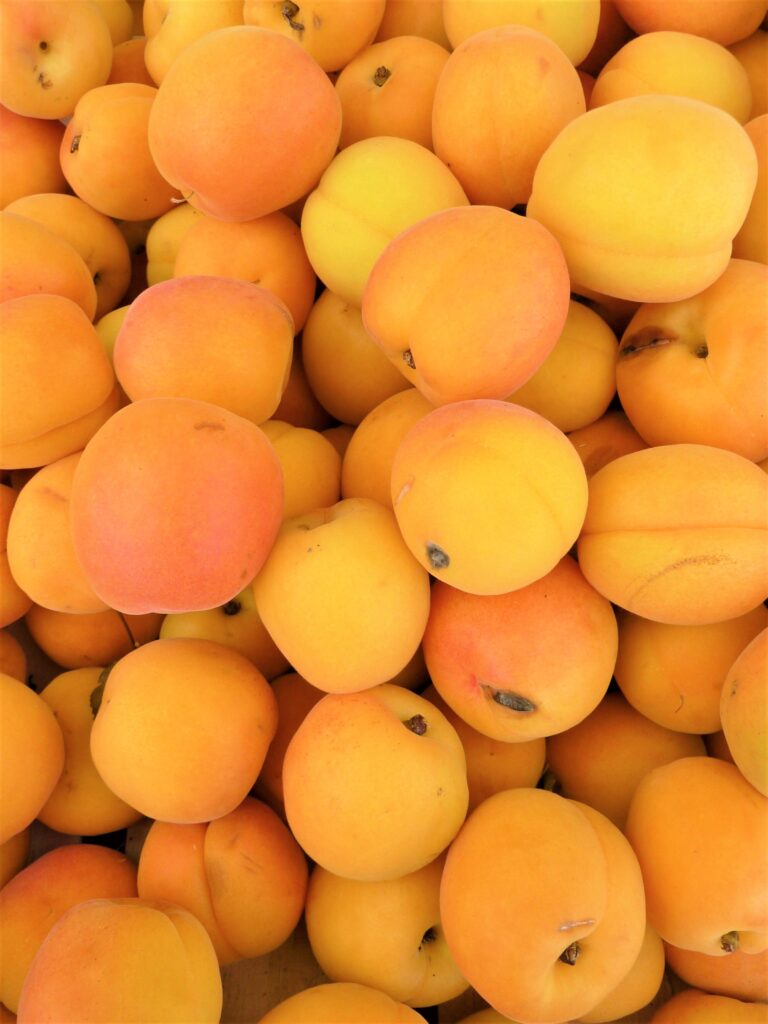
Castlebrite
A medium to large apricot, brightly coloured, quite sweet. Castlebrite is a good, reliable apricot, not very strong in flavour but nice for eating and jam. They begin sweetening up on the tree as they start looking ripe, hang well, and continue to ripen without being too prone to falling off. Unfortunately, the trees are very vulnerable to blossom blight, and the fruit can be prone to brown rot. Self-fertile.
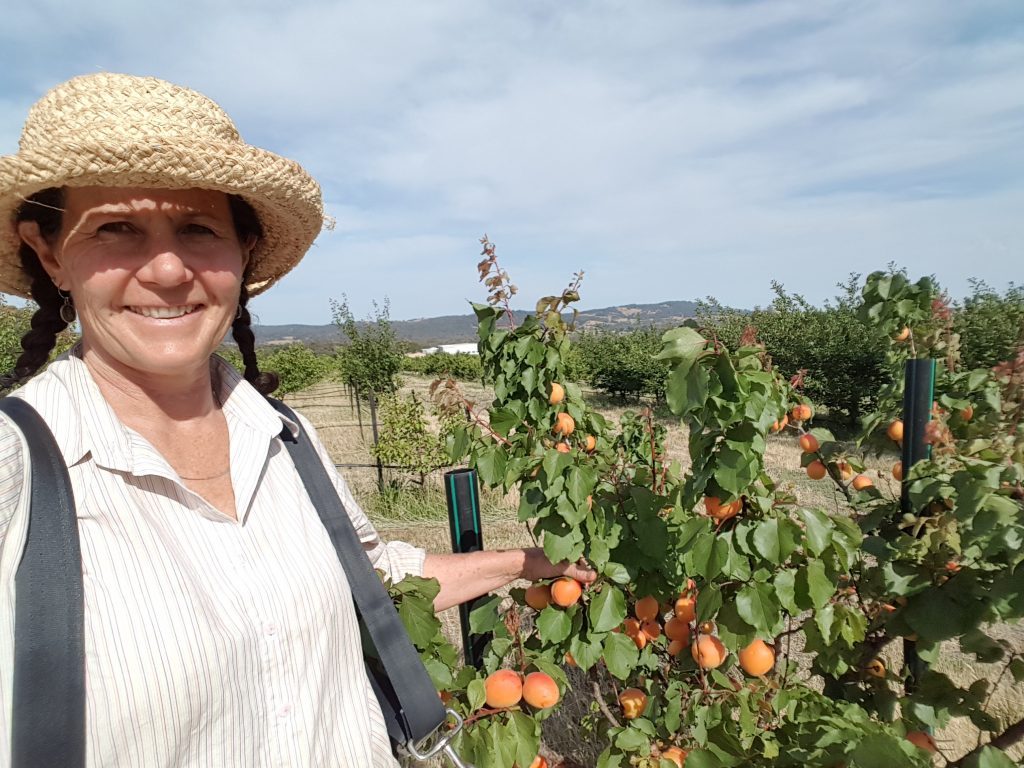
Divinity
Bred in South Australia in the 1950s. Small to medium, slightly oblong fruit, apricot colour with dull red blush. Dark apricot flesh, good sweet flavour with slightly acid skin, clingstone. Pollinised by Bulida, Moorpark, Rival.
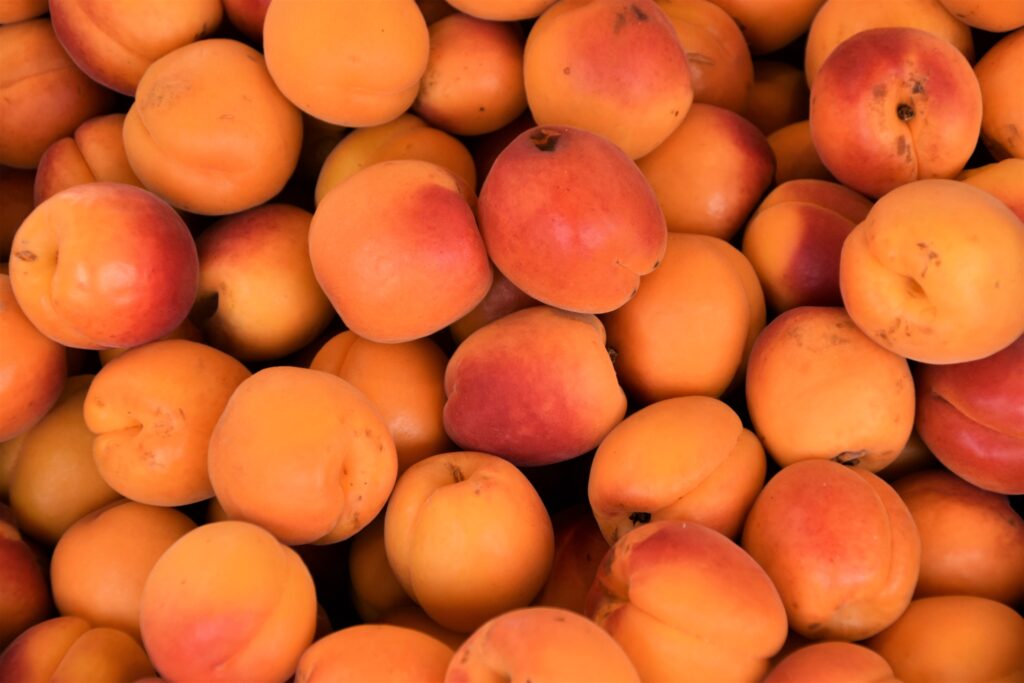
Bebeco
A medium to small, round pale apricot with firm texture, and delicious intense apricot flavour. They ripen well on the tree and are not inclined to fall off easily. Tend to be a very spreading tree. Pollinised by any other apricot that flowers at the same time, e.g. Moorpark, Patterson, Trevatt, Tilton.
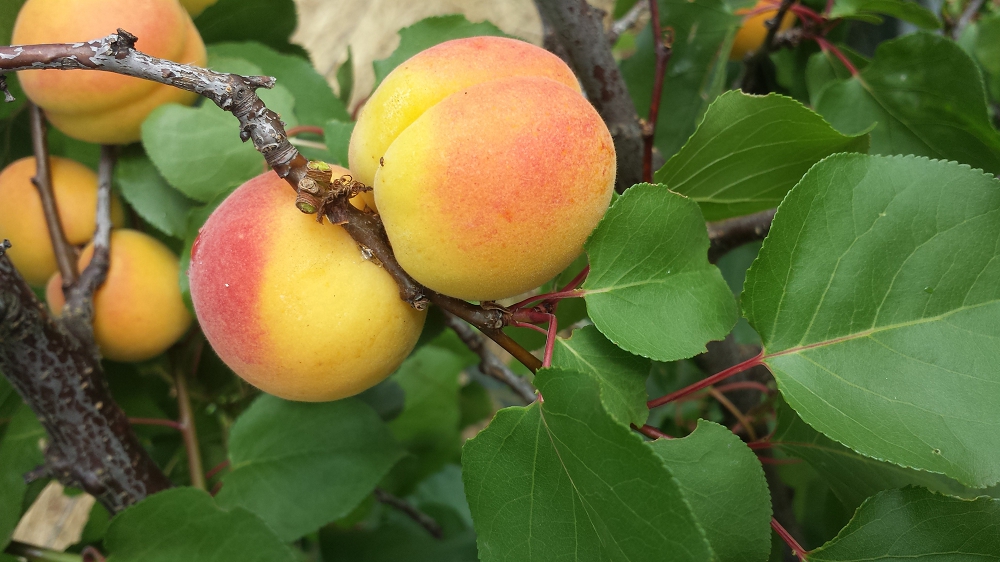
Goldrich
A dark orange apricot, which is notably sour when it first turns orange and starts to look ripe. It goes on to develop intense flavour and sweetness if left to ripen on the tree for another week or two. An apricot that really needs taste testing before picking to ensure sugars have properly developed. Great eaten fresh, and good for bottling, but makes a very dark jam. Self-fertile.

Rival
One of our favourite all-purpose apricots. Rival sweeten early on the tree, hang well, and are good for eating, preserving, and drying. They are also a reliable cropper, and not particularly vulnerable to disease. Our best recommendation for a backyard tree. Pollinised by lots of other apricot varieties including Earliril, Goldrich, Perfection, Sun Glo, and Tilton.
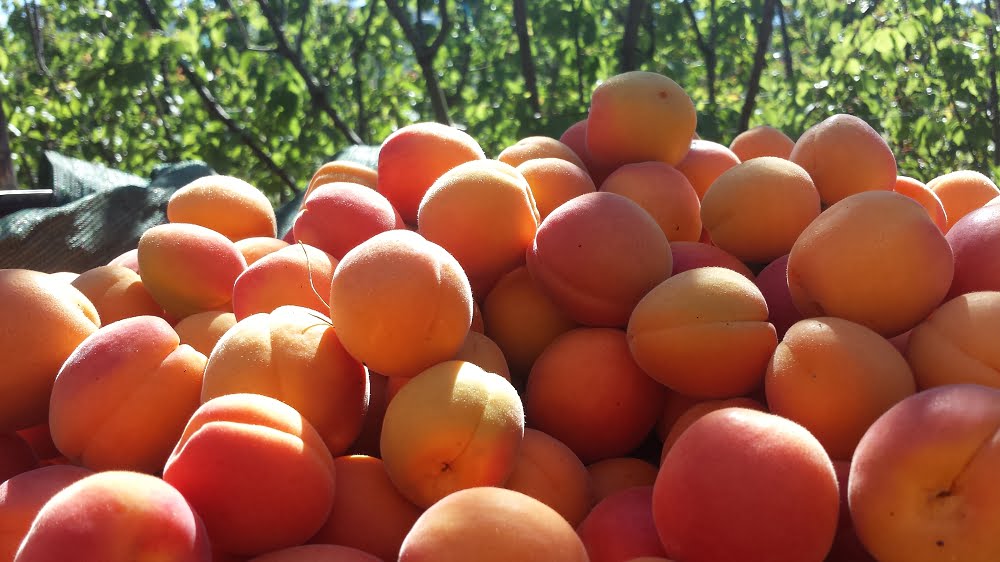
Patterson
Popular with canneries and is a good all-purpose apricot. Good for drying or eating fresh.
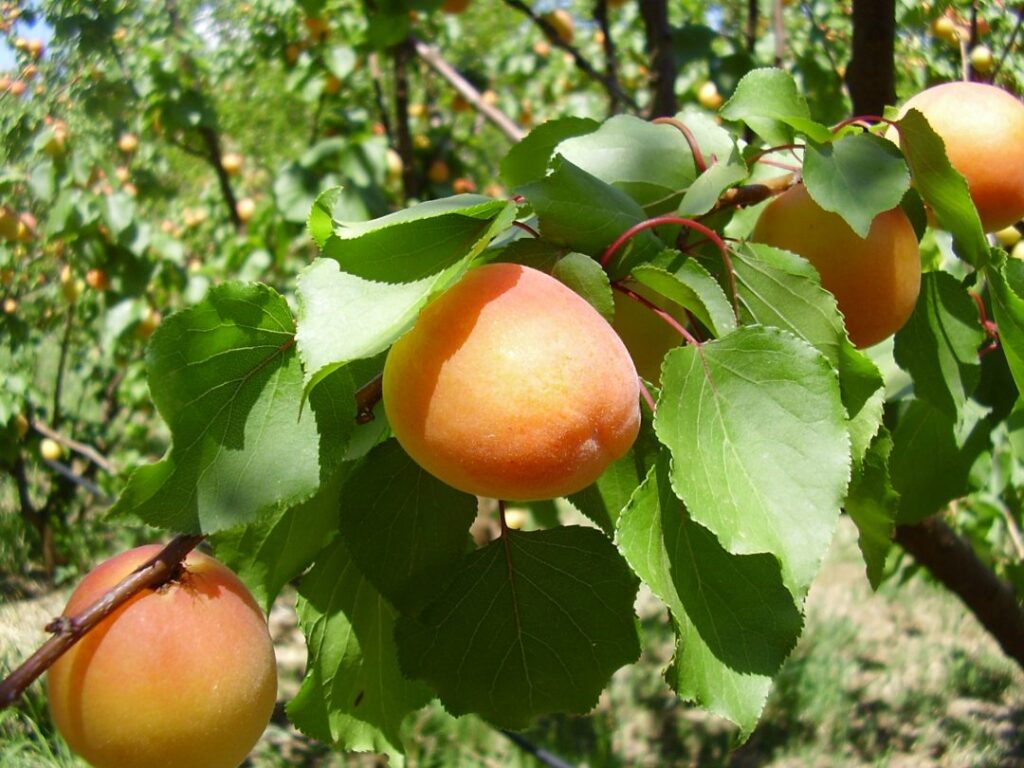
Trevatt
An old-fashioned favourite, a slightly flattened, very sweet, pale orange apricot that ripens from the inside, so they are sweet and delicious to eat even when they look a bit green. Trevatt are very soft textured, and make fantastic jam, but lose their shape immediately when cooked, so not great for bottling. Self-fertile.

Moorpark
Another old favourite with a distinctive flavour, darker colour, and firmer flesh than Trevatt. Moorpark is a late apricot, and not a good cropper in our climate, but are highly prized for their sweetness. Prone to freckle, which is a skin disease that affects the look of the fruit, but not the taste. Self-fertile.
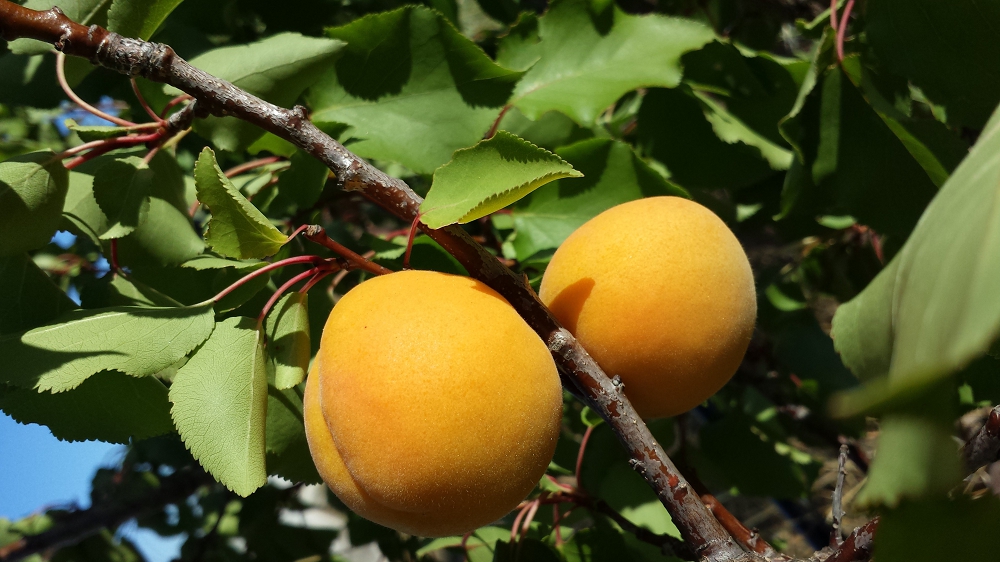
Tilton
Another great all-purpose apricot, Tilton is nice and sweet and good for eating fresh, bottling, or drying. Can be a little dry. Handy because they’re self-pollinating.
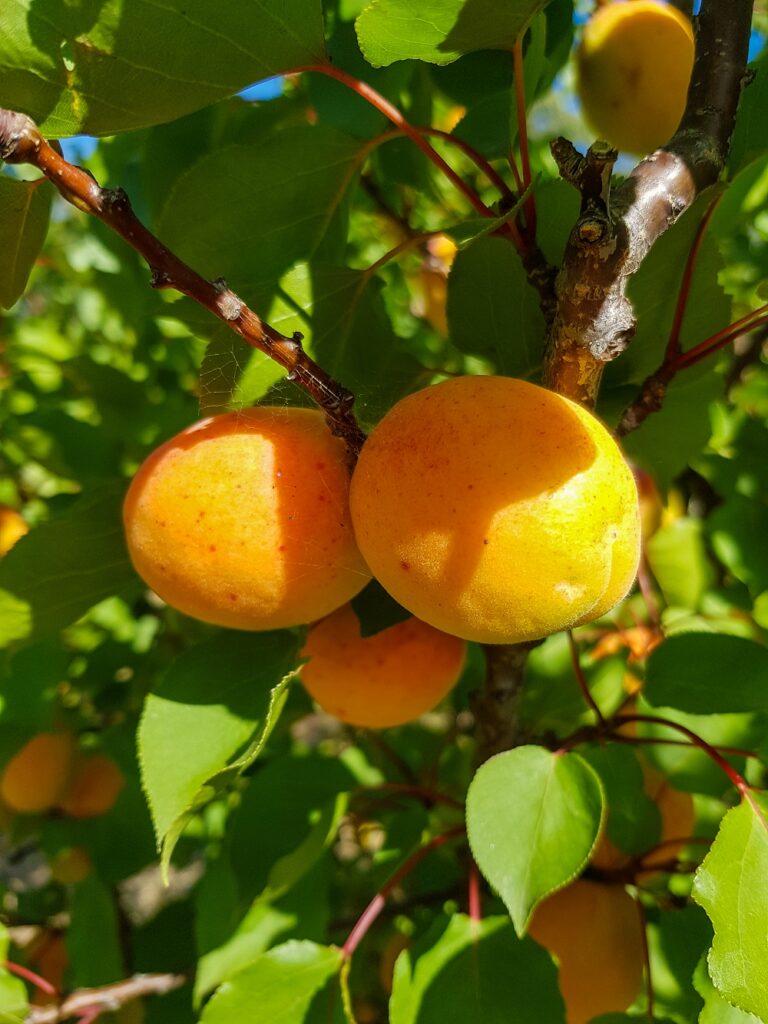
Hunter
Medium to large, pale apricot colour, light flesh that is firm and has good flavour. Freestone. A late flowering apricot. Self-fertile. Ripens 3 weeks after Rival, in late January. One of the latest fruiting apricots.
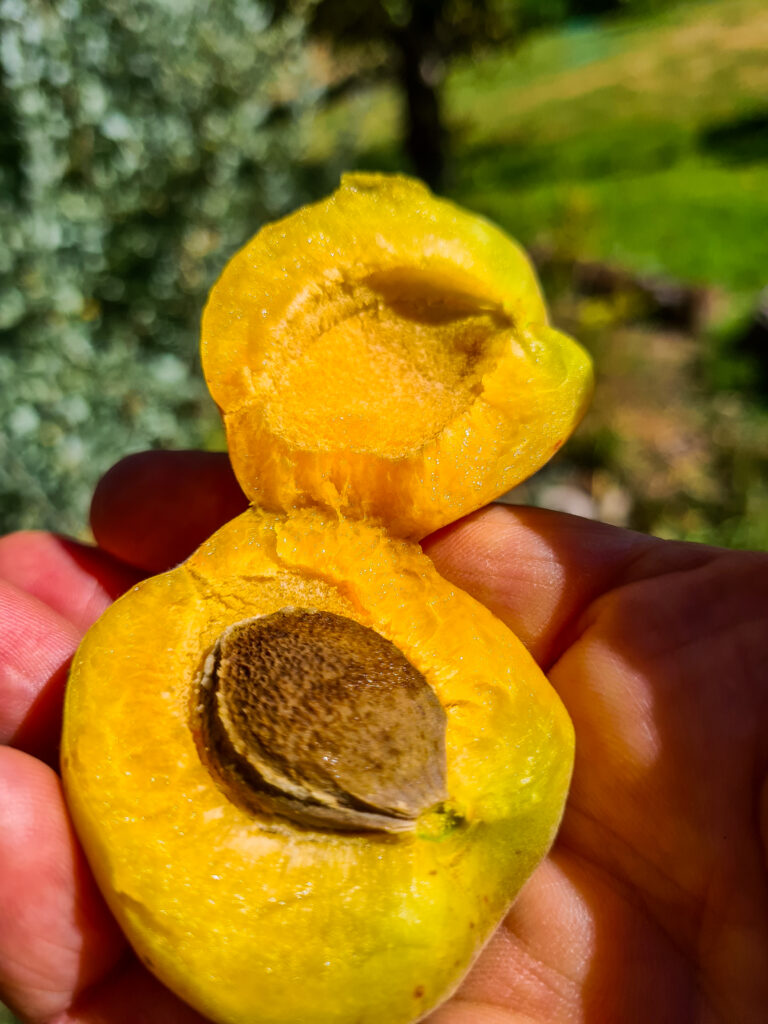
What else is there to love about apricot trees?
Apricot trees are very vigorous, and are usually grafted onto plum rootstocks (or occasionally peach). They can grow into massive trees and are absolutely gorgeous in spring when they’re covered with fragrant pink and white blossom.
They’re fabulously good for you. They’re high in fibre, vitamins A & C, and have masses of antioxidants. According to Shakespeare in A Midsummer Night’s Dream, they’re also good for your love life.
Apricot kernels have been used as a cancer treatment since at least the 17th century and are still available in many health food shops for this purpose, though modern science is conflicted about whether it actually works.
The kernels contain small amounts of hydrogen cyanide. This is poisonous in large doses but fine (and possibly therapeutic) in small doses. In fact, it gives a lovely marzipan flavour to jam if the kernels are cooked with the jam.
Are apricot trees easy to grow?
This is one area where it can be a little harder to love your apricot tree. Apricots can be really tricky to grow because they need a very specific climate to produce fruit.
They need a cold winter for the fruit to set but are tragically sensitive to frost in spring, which can damage both the flowers and small fruit. They also need warm conditions in spring and summer because they ripen so early.
One of the main reasons we love apricots is because we can grow them! Our farm has just the right combination of cold winters and hot summers, and the huge advantage of being almost frost-free.
Sadly, they’re also prone to fungal diseases, especially blossom blight and brown rot, as well as gummosis. They’re usually pruned in late summer or early autumn, while the weather is still warm, to help prevent the spread of disease.
As well as pruning, the other main maintenance job with apricots is fruit thinning in spring, because they’re a bugger for biennial bearing (heavy crop one year, followed by a light crop the next year), and thinning breaks the cycle, but the trick is, you have to do it every year!
Tell me again why I love them?
They sound like hard work, don’t they?
They’re probably the fruit tree we hear the most complaints about. However, with the right advice it’s totally do-able.
You just need the right climate, the right pruning, good hygiene, organic fungicides, and good pest control.
Seriously, it’s quite possible to keep your apricot tree healthy and bearing well. And all that hard work of getting a crop is sooooo worth it because apricots are wonderfully versatile.
If you’re lucky enough to harvest a glut, they make delicious jam. They also lend themselves to preserving and drying.
With a little work in the kitchen, you can capture those delicious memories of eating fragrant ripe apricots straight from the tree to enjoy all year.
Related Articles
Do your fruit trees have the right pollination partners?
Estimated reading time: 6 minutes Pollination partners for fruit trees are one of those things that most gardeners have heard of, but few really…
Providing frost shelter for fruit trees
Learn how to provide frost shelter for your fruit trees in spring to protect the flowers and fruit from damage.
How to buy a good fruit tree
Learn how to select a healthy fruit tree when you’re buying from a nursery, to give your trees the best possible start in life.

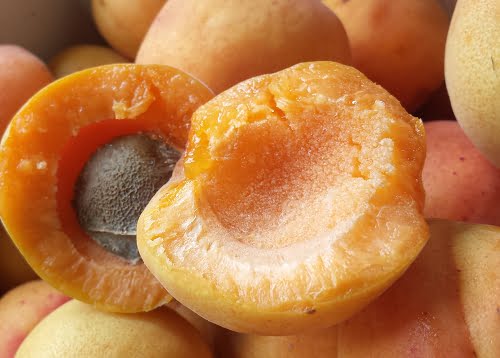


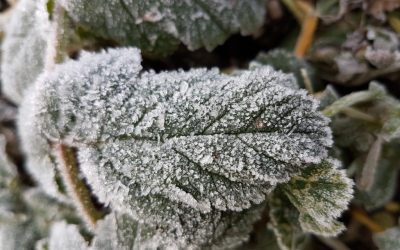
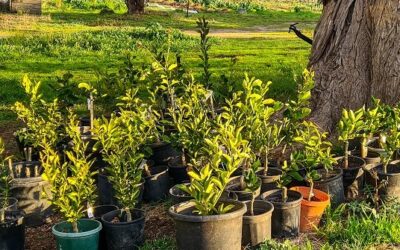


Hello,
Thanks for the article and wonderful photographs.
Just one question: are all of the varieties that you mention available to home growers? I have been able to find only a few of them in nurseries.
Thanks and regards,
Grant
Hi Grant, yes most of them should be available. We grow most of those in our on-farm nursery (called Carr’s Organic Fruit Tree Nursery). We advertise the trees through our Weekly Fruit Tips newsletter, so if you sign up for the newsletter you’ll be the first to hear about them!
Thanks for this Katy. I would love to buy a RIVAL apricot are you selling any next season or do you know where to buy them.
I have just planted a PLUMCOT and hope it goes well
Hi Margot, yes we should have Rival available next winter through Carr’s Organic Fruit Tree Nursery – they’ll be advertised in the Weekly Fruit Tips when they’re available.
Hi, I purchased a Katy Apricot from Carr’s in 2024 and fell in love with her, the apricots were perfect in timing, early December and incredibly tasty. I was looking forward to the future. 26th December the Grampians Bushfire breached our property and unfortunately Katy was right on the edge of the area that was burnt in my heritage fruit and nut nursery (est. Feb 2024 inspired by the desire to create a food forest and support the ongoing availability of heritage varieties as well as supporting family and community with surplus fruit). Four almonds were impacted (one is shooting below the graft, two are alive on the non impacted side, one is okay. Katy Apricot was impacted badly, she’s got shoots going up but right on the graft so I’m not sure if its going to be Katy or rootstock. Three seedling nectarines have shoots coming up from ground level, and one Greengage looks as though its not pulling through, luckily the other greengage which was from Carr’s is looking great, it was on a lower terrace with apple trees and my husband and son managed to stop the fire in between the terraces.
Katy is my number one focus. She was an advanced tree, so will be hard to replace by grafting, but I could order another Katy from Carr’s to plant in her place and work on grafting to the shoots – I kind of hope I might find out if they are Katy or rootstock before transplanting because the poor tree has had enough trauma.
Looking forward to suggestions, near Pomonal, Grampians
How devastating to lose so many beloved trees, we were thinking of you all during those terrible fires. The almonds that are half alive half dead at this point you could leave and see what comes back in spring. It sounds like a few of the trees may be better off being replaced rather than rehabilitated unfortunately – the trees that have shot below the graft could be re-grafted to proper varieties again but they may not ever be as strong as before. The Katy sounds like it may be the rootstock, but you never know – if you have the space you could just let it go this year and see what happens, and plan to replace it next winter. Best of luck reviving your food forest, hopefully in a few years you will be back to apricots, almonds and greengage fruiting wonderfully.
We’d also like to offer you a complimentary one-year Premium membership of the Grow Great Fruit program, which is our way of supporting people who go through natural disasters – please send an email to info@growgreatfruit.com with the details and we’ll sort out your membership.
Jill – GGF Team
Thanks for the article.
What and how do you best prepare the soil transplant an apricot tree?
Hi Anthony, no special requirements for apricot trees, just the same as for any tree – a green manure is one of the easiest ways to improve the soil (here’s the link to our green manure course https://growgreatfruit.com/product/develop-your-green-thumb/). The best time to transplant fruit trees is in winter.
Hi, I bought a home with 12 beautiful espalier stone fruit trees, including one apricot. The branches are currently laden. I have no idea how to check the soil and and add nutrients to enable a successful harvest. Any advice gratefully received.
Hi Julia – lucky you, great find in a new house! The most important thing to do first is to check whether you’ll need to thin the apricot tree to make sure you don’t get any broken branches/laterals from too much fruit (check out our thinning course here – https://growgreatfruit.com/product/fruit-tree-thinning/). There may be no need to do anything urgently for soil nutrition if the trees are growing well, but it’s always the right time for a dose of compost!
I’m surprised your list didn’t include the Blenheim variety. It is our favorite but sets on to early to be a good producer in our colder climate in Idaho. Typically we got a small crop most years and a really good crop about every 7 when there wasn’t a late freeze. We are in Boise. Our one Blenheim finally succumbed to Borrowers. The Squirrels discovered that the Kernel in the pit is not bitter and we lost a tree full of fruit to about 30 or 40 squirrels one year. Fun to watch but saddening to see.
Hi Mike, we’ve just grafted that variety and so will hopefully be able to try the fruit over the next couple of years. Good to hear that you’ve enjoyed it in the past, because it doesn’t sound like you’ll be enjoying them in the future – you seem very understanding about your “borrowers”!
I have seen ads for “Turkish” apricots. Is this a variety available from some nurseries, or does it refer to apricots imported from Turkey? The ads do not declare them to be imported, so I am really not sure
I still love the Trevatt. Ideal for stewing (cook up and put in the deep freeze for apricots all year round) and for jam.
Really looking forward to the season.
Just get depressed reading about apricots.. have two 4 year old trees .. healthy , 2 M tall.. neither of them fruit..’one is Moorpark the other I’ve forgotten..don’t know what to do..
Hi Robbie, this blog post on things that can go wrong with apricots might be a good start, otherwise a good look at our pruning & thinning resources might help you arm yourself with knowledge for next year! Meg – Grow Great Fruit team.
Hi the variety I have planted is called Newcastle Early Apricot. It is very early as my fruit are nearly the size of golf balls at the moment. I was wondering if you had some comment on this particular variety. Thanks M.
Yes – all in the name “early”. Definitely a good one to include to stretch out your apricot harvest, although worth having some other cultivars too for later harvest. Hope you get to enjoy your crop! Meg – Grow Great Fruit team.
Our Trevatt apricot always has a good crop, in Melbourne not far from the bay, (we do thin it). Delicious to eat and makes wonderful jam. Made about 40 jars of jam last year, but finished them a few weeks ago.
Sounds delicious, hope you can make til you have some more! Meg – Grow Great Fruit team.
What is the best type of Apricot fruit tree used for producing an Apricot Ale in the SoCal region?
Mike – that’s a great question – really not sure about brewing beer, but that sure sounds delicious – let us know if you find out! Meg – Grow Great Fruit team.
I love and grow Blenheim. Extremely productive. I grew up eating these here in California. Blenheim makes fantastic jam.
I have a 5-year-old apricot tree that I grew from seed. Don’t know what kind it is but it has not produced any fruit yet. I put a couple of fertilizing stakes in the potting soil for fruit trees. It’s April now and I’m hoping I get something this year. It’s about 6 ft tall and I have been pruning it like I’m supposed to. It’s growing in a very large cut down barrel. Could that be the problem? Thanks for any help you can give me, Mary Lou
Hi Mary Lou – have you noticed the apricot tree flowering? Or are there any signs of disease? They would be some of the first things I’d be looking for. The container may be part of the problem, or the growing medium, but first step in diagnosis would be to understand if the tree has produced any flowers. You might find our other blog on things that can go wrong with apricots helpful, and we also have a short course on growing fruit trees in pots that might be of use. Good luck – Meg, GGF team.
Thanks for the information. Just starting to research these.
Thank you for all your wonderful information! I live in Canberra and am looking for one dwarf apricot (to fit in a fully meshed enclosure to protect several dwarf fruit trees, grapes and chooks from possums, birds and predators). It is an elevated but sheltered site. so does not get as heavy frosts as elsewhere in Canberra. The site gets morning to mid-afternoon sun. I have short-listed dwarf Moorpark and dwarf Trevatt. Main criteria are delicious flavour fresh off the tree as well as hardy and productive. I’ll be grateful for you views on these – and alternatives …. Thanks.
BTW – my mother grew on on a property that had a huge orchard in the the 1890s, and what was reputedly the ‘largest canning factory in the southern hemisphere’. While the commercial business did not last long (because of high transport costs), many trees remained for decades. One of my most delightful memories as a child in the 1950s was picking bucketfuls of sweet apricots from trees scattered over sheep paddocks. Barbara
Hi Barbara, what a lovely family memory – and nice to try and continue the apricot lineage. Your shortlisted varieties sound appropriate – Moorpark tend to be one of the cold-hardier apricots and have a lovely flavour off the tree. Tiltons are also quite cold hardy and lovely fresh – they are often available on dwarfing rootstocks. Great that you have a fully meshed enclosure! Good luck, Meg – GGF team.
We have a Fireball variety apricot that has just fruited for a second year. Both seasons some of the fruit have like a vein/string through it. There’s a main one that seems to hold the stone in place but they are all throu the flesh. It’s not nice to eat. It’s scratchy and yuk. I hope I’m just doing something wrong as I’d hate to think every year will be like this.
TIA 😊
We have just lost our apricot tree due to gummosis, it is called Mystery Apricot. We would like to grow another because of its taste, longevity, easy to bottle. Cannot find growers of this variety. Can you help?
We purchased a house with an apricot tree (~20yo) in the front yard which was the only fruit tree on the property to survive some years of neglect. Is there some way we can figure out which variety it is? Freestone. Early blooming. I think self-pollinating.
This is our 3rd harvest year with the tree and my first fruit tree. The tree is only half a tree. Seems to have gummosis and lost several branches. Our first year, it bore 10 apricots. The 2nd year, 10 lbs. This year, at least 50 lbs. We live in southern Nevada and the apricots started to turn color around June 12. I had to pick them before they tree-ripened because the birds started consuming them. I left them in single layers in trays in our living room to continue ripening. They were incredibly sweet and flavorful. Ate them fresh. Froze most. Dried some. Made some jam (no sugar needed!). Gave away at least 20-30 lbs. I have a lot to learn about how to care for this tree.
Thank you for the great information. There are many pieces of information that is needed to plan an orchard, though, and I’ve yet to see a web page that has all the information so it’s back and forth, info page to info page, nursery to nursery, trying to collect information into a spreadsheet so it can be reviewed all together rather than one variety of one fruit at a time. Some of the information required includes:
* variety,
* Latin name (to avoid confusion or misuse of common names),
* root stock with row entries for each of best and of worst 3 to 5 root stocks,
* height and spread on that root stock,
* growing zones,
* bloom date,
* ripening date,
* zone at which flowering and ripening dates are calculated,
* size of fruit,
* disease resistance,
* depth or quality of flavor,
* color of skin,
* color of flesh,
* growing or success or other notes.
Does anyone know of a site with that exhaustive information for many varieties and many fruit types?
Hi Dale, glad you’re enjoying our information. Great idea! You’ll be pleased to hear that we do have a comprehensive fruit tree database containing (almost) all the categories you’re suggesting! It’s part of the Grow Great Fruit program, you can find out more about it here: https://growgreatfruit.com/grow-great-fruit-program-sign-up/.
I have arty young apricot Goodrich tree which I was vey excited to plant out i my garden
But have since read that the pits are very poisonous to digs and cats if injected
Is this a major concern seeing as I have a very greedy lan x and often have friends dogs in my garden too!??